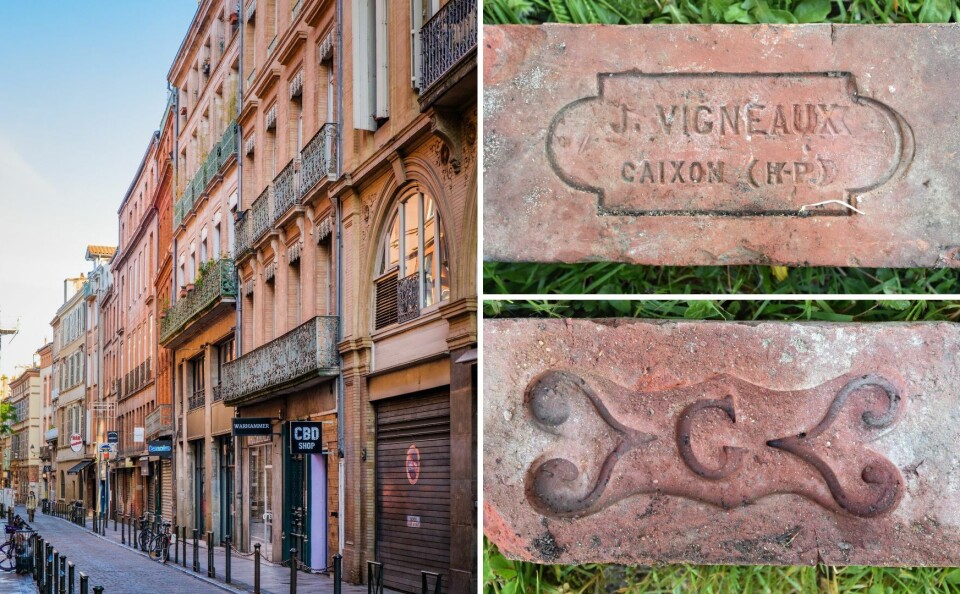-
Is it time to shorten France's school holidays?
Pascal Bressoux, professor of educational sciences at the University of Grenoble Alpes, explains why the school timetables need a rethink
-
Savoyards poke fun at Parisians over snow disruption
A few centimetres shut down capital but for those in Savoie ‘it’s time to clear the chalet steps so no one slips after an apero’
-
Lookalike La Poste site accused of misleading users in France
Reader says he was overcharged by poste-en-ligne.com and his letter did not even arrive
‘Old French house bricks have a character that is unique’
Bricks tell a story and can help date parts of your property, says Nick Inman

You might think that the average brick does not have much to say for itself, but you would be wrong.
There is no such thing as an average brick.
I am not referring to raw-earth bricks dried in the sun, but to bricks baked in a kiln to make them structurally stronger.
Nor am I thinking of modern mass-produced bricks, which are much of a standardised muchness.
Here I am concerned with old bricks that come in an assortment of sizes and colours, giving them great character.
Read more: French renovation: Why bricks don’t deserve ‘second best’ reputation
Romans introduced bricks to France
In the old days, they were often used for their structural rather than aesthetic properties and duly covered up with plaster, but they can look great when exposed and cleaned.
These ancient bricks have a good, long story to tell.
Rectangular cuboids of compressed mud were first baked around 4,000 years ago to make a hard, resilient material sometimes referred to as ‘artificial stone’.
The Romans introduced bricks to France and made good use of them.
The technology fell into decline as the Empire broke up and was only revived in the Middle Ages.
It was only in a few places, such as Flanders and around Toulouse, that bricks became the building unit of choice.
These areas generally had a short supply of stone but good deposits of the right kind of clay.
Albi cathedral, near Toulouse, is an outstanding example. Elsewhere in France, most structures built entirely from brick are post-1850.
Bricks can help date parts of your house
When I was repairing two pillars that frame our great farm door, I pulled away the mortar that had been penetrated by damp and found that the bricks were stamped with the legend ‘Usine à vapeur Lartique Nogaro (Gers)’.
This was enough information to determine their origin and approximate date of manufacture, given that the factory is no longer there.
The fact that they had travelled 40km tells me they were brought by motorised transport, whereas other bricks I have found on my property – some stamped with a heart – come from 5km away and might have arrived on a horse-drawn cart.
Read more: If walls could talk: Anglo-French group delve into history of houses
Spot lines of bricks in half-timbered houses
Before industrialisation, bricks were mostly combined with other materials.
They were commonly used to fill in half-timbered frames and in our region you see them as neat horizontal lines across walls made of round river stones – every six or seven courses, a line of bricks was inserted to recapture the level and solidity.
From the Middle Ages to early modern times, bricks were made in small-scale briqueteries or tuileries close to where they were needed but also where there was a good supply of wood.
Bricks were shaped using wooden moulds and baked in small wood-fired kilns.
The entire process was artisanal, meaning that no two old-fashioned bricks are precisely identical in dimension or colour.
Difference between northern and southern bricks
Very broadly, there are two species of old brick – although there are many exceptions to this rule.
The brique du nord (northern brick) is by far the most common and is similar in its dimensions to the modern brick – the length being double the width, and the depth being more or less half-width.
More attractive, to my taste, is the brique foraine or brique toulousaine (southern brick) which is longer and flatter/thinner.
It is typically 5cm thick but can be as little as 2.5cm, or even less.
You can buy new ones from builder’s merchants – useful if you have to fill a hole in a row of existing bricks but the uniform colour will always give them away.
Related articles
‘We built a €120,000 eco-house for a thrifty retirement in France’
Unusual French properties: Mill owners can see water below their feet
Nine tips for managing a French home renovation project yourself
























